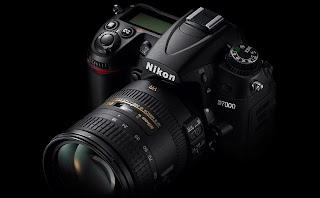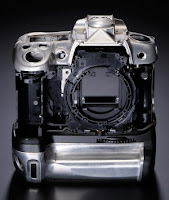 The new Nikon D7000 SLR camera offers exceptional performance, reliability and high quality image. All this is packed in its portable and durable body. The camera incorporates performance and many features so that the image quality is excellent. It has an effective resolution of 16.2 megapixels and the CMOS sensor of image in the recently developed format of Nikon DX. The Nikon D7000 has a new engine for image processing, EXPEED C2 that offers an efficient high speed of processing gives high quality of image. It also has improved sensitivity of ISO, 100- 6400 and expandable to 25,600, ensuring brilliant detail with minimum sound while shooting objects that are fast moving or in low light without making use of flash.
The new Nikon D7000 SLR camera offers exceptional performance, reliability and high quality image. All this is packed in its portable and durable body. The camera incorporates performance and many features so that the image quality is excellent. It has an effective resolution of 16.2 megapixels and the CMOS sensor of image in the recently developed format of Nikon DX. The Nikon D7000 has a new engine for image processing, EXPEED C2 that offers an efficient high speed of processing gives high quality of image. It also has improved sensitivity of ISO, 100- 6400 and expandable to 25,600, ensuring brilliant detail with minimum sound while shooting objects that are fast moving or in low light without making use of flash.The view finder of the Nikon D7000 SLR camera has a glass pentaprism covering nearly 100% of the frame and having expansion of 0.94. It provides a more convenient and accurate approach. It has a shutter that is able to seal 1/8.000s. It has been examined for about 150,000 cycles. The camera is given protection by a casing of alloy of magnesium at the back and top. It has a seal that is durable against moisture and dust and is therefore suitable for very tough conditions. When it comes to storage, the camera provides complete reliability. There are two slots for memory cards. This increases the capacity for storage and provides freedom for managing video and images by saving a lot of space, storing more images and separating different formats. The space security has to be backed.
 The system of AF has 39 points of focus that includes 9 sensors of the cross type at the center. The focus is the sharpest no matter what frame subject is in. The revolutionary sensor of RGB metering has 2,016 pixels that enhances the efficiency of the system of Scene Recognition that along with the capability of continuous high speed shooting at 6 frames per second ensures the capture of images of high quality and also great precision shots. Nikon D7000 SLR camera has easy access to the button of video record so that footage can be captured in high definition easily. AF-F gives continuous focus during the recording of the video that is captured with the help of MPEG4 AVC/H.264 compression. It also features a microphone stereo jack for the recording of quality sound.
The system of AF has 39 points of focus that includes 9 sensors of the cross type at the center. The focus is the sharpest no matter what frame subject is in. The revolutionary sensor of RGB metering has 2,016 pixels that enhances the efficiency of the system of Scene Recognition that along with the capability of continuous high speed shooting at 6 frames per second ensures the capture of images of high quality and also great precision shots. Nikon D7000 SLR camera has easy access to the button of video record so that footage can be captured in high definition easily. AF-F gives continuous focus during the recording of the video that is captured with the help of MPEG4 AVC/H.264 compression. It also features a microphone stereo jack for the recording of quality sound.The Nikon D7000 SLR camera has the integrated feature of video editing that makes you free to select footage from the start as well as end points. You can change selected frames so as to capture the images without depending on the computer. You can easily edit and also share movies fast. Nikon has come up with a Flash SB-700 unit that can be used easily with a package of functions that are integrated. It has the benefits of light exceeding the flash internal to the camera. This allows complete control on the lighting of the subject or scene to develop images that are professional looking and also give dramatic results.
If you are spending any significant amount of money on photography equipment then it well worth the considering taking out photography insurance, whether you are an amateur or professional photographer there is an option for you fro more information regarding professional photography insurance or amateur photography insurance. Article Source: http://ezinearticles.com/?expert=Duncan_Beech |






